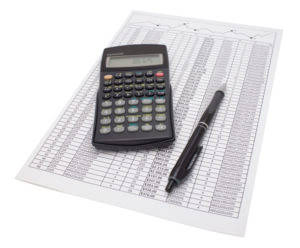Content
- Our Methodology
- Income Statement and Bookkeeping: Revenue, Expenses, and Costs
- Just for you: FREE 60-day trial to the world’s largest digital library.
- What Are the Different Types of Bookkeeping?
- Relax—run payroll in just 3 easy steps!
- Daybooks
- Why is Gofrugal the best bookkeeping software for small businesses?
- Get QuickBooks

These insights are not available in plain sight but can be derived from reports. Bookkeeping software summarizes the business activities and present in the form of reports. This app automatically posts Shopify store sales to Xero or QuickBooks and reconciles your payouts so you can see everything has been accounted for correctly. A2X is trusted by hundreds of leading ecommerce accounting firms. You can find different ways to cut costs by looking into supplier discounts based on your payment history, bulk ordering, or pre-ordering certain products. Most of the time, watching and reviewing your expenses can be a monthly task. But if you have any new expenses, or variable expenses, you’ll want to keep a closer eye on them to make sure they’re aligned with expectations.
There’s not enough information to predict the current financial position of the business or project its growth. Financial PlanningFinancial planning is a structured approach to understanding your current and future financial goals and then taking the necessary measures to accomplish them. Because this does not begin and end in a specific time frame, it is referred to as an ongoing process. Cash FlowCash Flow is the amount of cash or cash equivalent generated & consumed by a Company over a given period. It proves to be a prerequisite for analyzing the business’s strength, profitability, & scope for betterment.
Our Methodology
Trying to juggle too many things at once only works to put your organization in danger. If you’re looking to convert from manual bookkeeping to digital, consider a staggered approach. Overhauling all at once can be overwhelming and discouraging, so it’s best to take it slow and make meaningful and intentional shifts.
- It is best to look out for errors early, and correct them on the ledger instead of waiting for the trial balance at the end of the fiscal year.
- In addition to these basic bookkeeping activities, your costs will be impacted by how your accounting systems, policies and procedures, and reporting needs are set up and administered.
- If you have questions or need help, you can access customer support 24/7 by chat and live Q&A sessions.
- Typically, bookkeeping will involve some technical support, but a bookkeeper may be required to intervene in the accounting cycle at various points.
- You must track Accounts Receivable and keep it up to date so that you send timely and accurate bills or invoices.
- Post corrected entries in the journal and ledger, then follow the process again until the accounts are balanced.
A cash register is an electronic machine that is used to calculate and register transactions. The cashier collects the cash for a sale and returns a balance amount to the customer. Both the collected cash and balance returned are recorded in the register as single-entry cash accounts.
Income Statement and Bookkeeping: Revenue, Expenses, and Costs
If you are studying to be an accountant, bookkeeping is just one aspect of accounting that you will need to know. As you begin your career, it is essential that you learn how to prepare financial statements, how to file taxes and how to write internal reports. While all of these roles are important, you will also need to get technical skills so that you are able to record transactions and make changes in a bookkeeping system. The basic single-entry system will only report to one single account when any transaction is recorded, hence the name. While this is very simplistic for those who are inexperienced with bookkeeping, it can present problems when you start to balance accounts or construct financial statements. After choosing a bookkeeping method and creating accounts, the next step is to record your business transactions accurately. If you’ve chosen to use the double-entry method, transactions are split into debit and credit accounts.
For example, all credit sales are recorded in the sales journal; all cash payments are recorded in the cash payments journal. In the single entry system, each transaction is recorded only once. Most individuals who balance their check-book each month are using such a system, and most personal-finance software follows this approach. Double-entry bookkeeping systems are used for businesses that routinely have more complex transactions. Companies that collect income through accounts receivable and receive merchandise and inventory on credit are better-suited for this method. This system posts single transactions as an income or expense item, then creates a second entry to trace the transaction to a corresponding account.
Just for you: FREE 60-day trial to the world’s largest digital library.
Cash registers also store transaction receipts, so you can easily record them in your sales journal. With good bookkeeping services or software, you can streamline data entry, create detailed financial reports, consolidate data, and automate record keeping. It’s also an easy way to improve accuracy across your business and eliminate time spent doing repetitive tasks.

Payments, approvals, reconciliation and reporting are unified under one dashboard. ZarMoney has types of bookkeeping simple pricing plans geared toward entrepreneurs, small business owners and enterprises.
What Are the Different Types of Bookkeeping?
Any bookkeeper – or bookkeeping software – can cover basic accounting tasks, which are basically just financial recordkeeping. Theincome statement is developed by using revenue from sales and other sources, expenses, and costs. In bookkeeping, you have to record each financial transaction in the accounting journal that falls into one of these three categories.
- Some accounting programs allow you to customize what you see first by rearranging the information.
- Whatever system or methods you decide to use, proper bookkeeping is crucial to ensure your business runs smoothly.
- This book usually maintains the records of cash transactions, sales, purchases, receivables, payables, daily and/or weekly summary of cash receipts/payments.
- To wrap things up, the choice between the single entry system and the double entry system lies with the owner of the business.
- An accountant usually generates the trial balance to see where your business stands and how well your books are balanced.
- Plooto is a payment platform that enables small businesses to manage their payments in one central location, thus giving business owners a clear picture of their financials and more control over them.
Blake provides strategic advisory services to businesses in many industries nationwide and is passionate about helping others reach new levels of success. A fractional CFO is a top-level financial executive who is hired on a part-time or interim basis to provide strategic and financial guidance to businesses. Fractional CFOs are usually brought in during periods of transition or growth, and their main focus is to help businesses make sound financial decisions that will improve their long-term prospects.
Relax—run payroll in just 3 easy steps!
It requires you to record each financial transaction just once in your overall bookkeeping record. This method can work for freelancers or sole proprietors with no more than one or two business transactions a month. Manual bookkeeping is prone to errors and demands extra effort to recheck repeatedly. Using bookkeeping software, every transaction that happens in the business can be recorded with nil errors. Bookkeeping, being the first step in accounting, helps to keep the book of accounts accurate.
You get a full suite of accounting tools to do everything from track time and expenses to run financial reports. A business unit is involved in various financial transaction every day and over time it becomes difficult to keep track with these millions of transactions and use them for future reference. To understand the fundamentals of small business bookkeeping, you need to be aware of the different types of accounts – some of which are outlined below.

Credit PeriodCredit period refers to the duration of time that a seller gives the buyer to pay off the amount of the product that he or she purchased from the seller. It consists of three components – credit analysis, credit/sales terms and collection policy. Cash ReceiptsA cash receipt is a small document that works as evidence that the amount of cash received during a transaction involves transferring cash or cash equivalent.
Daybooks
Your monthly review is a good time to think more strategically about how your expense account fits into your business. On a day-to-day basis, you might need to make decisions about when to buy something, or how much to spend on your business. Understanding how much cash you have on hand, and what else that cash needs to cover, is a key part of managing your books and your business. “If you don’t have adequate support, you can be denied both tax credits and deductible expenses, which, if you’re actually entitled to them, can be a big hit at tax time,” says Charlie.
I had a confusion regarding bookkeeper and accountant, this article helped me understand the difference between them. A bookkeeper is usually involved in the general accounting areas noted below. Keeping a record of the financial effect of the transactions, in the order in which they arise. Which accounting method you should choose depends on the size of your business. The 10 Best Payroll Software for Small Businesses 2022 To rate each payroll software program, we assessed payroll and HR features, ease of use,… To prepare the budget and to plan the next actions, organizations hunt for insights.
Why is Gofrugal the best bookkeeping software for small businesses?
Using the rules of double-entry, these journal summaries are then transferred to their respective accounts in the ledger, or account book. For example, the entries in the Sales Journal are taken and a debit entry is made in each customer’s account , and a credit entry might be made in the account for “Sale of class 2 widgets” . This process of transferring summaries or individual transactions to the ledger is called posting. Unlike the double entry system, the single entry method does not need a trained professional for it to be done.
Accrued revenue—an asset on the balance sheet—is revenue that has been earned but for which no cash has been received. Some advantages of accounting are that it provides help in taxation, decision making, business valuation, and provides information to important parties like investors and law enforcement. Some disadvantages are that the information may be biased, can be estimated to a degree, can be manipulated, and that the units used to measure business performance, namely cash, change in value.
Is loan payable a debit or credit?
When you're entering a loan payment in your account it counts as a debit to the interest expense and your loan payable and a credit to your cash. Your lender's records should match your liability account in Loan Payable.
As your Business-of-One grows from a simple freelancing or consulting operation into a bonafide business – whatever that means for you – your finances will get more complicated. You might have more clients to track down for payments, more income to track, contractors or employees to pay, and certainly more involved tax obligations. If your accounts don’t balance, you’ll need to recheck your entries and adjust where necessary. That is why it is important to be keen to detail when recording transactions. If using manual methods like excel, you’ll have to record both transactions. If you’re stuck on how to start creating these accounts, accounting services like Binery can help you get set up.
Thereafter, an accountant can create financial reports from the information recorded by the bookkeeper. The bookkeeper brings the books to the trial balance stage, from which an accountant may prepare financial reports for the organisation, such as the income statement and balance sheet. There are many aspects of accounting software that help make it a useful tool. As a small business owner, it’s important to know which features to look for.
To help you find the best accounting software for your business, we examined more than 100 applications. We looked for affordable, easy-to-use accounting programs with time-saving features, such as automated bank feeds, automatic payment reminders, and online invoicing and payment acceptance. We also searched for software with comprehensive, customizable, real-time financial reporting, https://www.bookstime.com/ because that is crucial for monitoring and understanding your business finances. An accountant usually generates the trial balance to see where your business stands and how well your books are balanced. Imbalances between debits and credits are easy to spot on the trial balance. Any miscalculated or wrongly-transcribed journal entry in the ledger can cause an incorrect trial balance.
What are the 2 methods of bookkeeping?
The two main accounting methods are cash accounting and accrual accounting.
ABC Corp maintains its books of accounts in a single entry bookkeeping system. Double-entry bookkeeping is the practice of recording transactions in at least two accounts, as a debit or credit. When following this method of bookkeeping, the amounts of debits recorded must match the amounts of credits recorded. This more advanced process is ideal for enterprises with accrued expenses.
Where to Look for Bookkeeping Positions
For a Business-of-One, even with contractors or a small number of employees, simple bookkeeping is usually sufficient. Revenue is all the income a business receives in selling its products or services.
The double-entry bookkeeping method involves recording two entries for a single transaction, which is based on the principle of debits and credits. This means that each transaction will have a corresponding debit and credit entry, ensuring accuracy and preventing errors in the recording of transactions. You can also outsource your bookkeeping duties by contracting with a firm like Binery that specializes in performing bookkeeping duties for small businesses. Their scope covers most common bookkeeping tasks, from tracking invoices and payments to reconciling accounts payable/receivable statements. Once a transaction is recorded as a journal entry, it should post to an account in the general ledger. The general ledger provides a breakdown of all accounting activities by account. This allows a bookkeeper to monitor financial positions and statuses by account.
